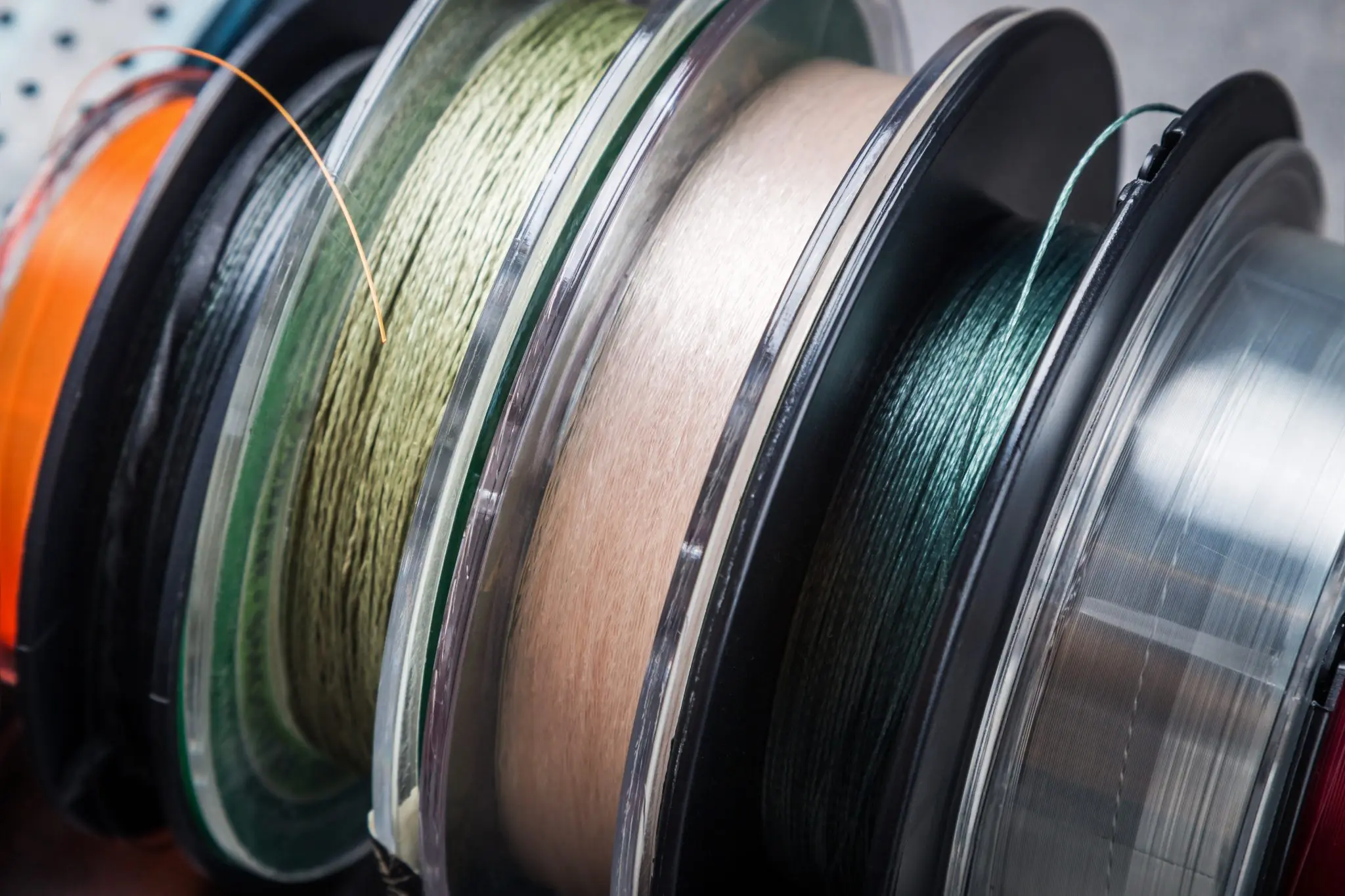Fishing lines come in many types. The most common are monofilament, braided, and fluorocarbon. Each has its advantages and disadvantages depending on the type of fishing and fish species. Braided lines are thinner, more sensitive than monofilament, and great for catching finicky fish.
Monofilament is the most used fishing line, offering good strength and abrasion resistance at a budget-friendly price. Monofilament line is usually the most economical and a strong choice when fishing for bass. Its strength and abrasion resistance make it great for fighting bass, and its limpness allows for good casting. On the other hand, monofilament can be stretched and weakened with heavy use, reducing performance over time. Additionally, it is not as sensitive as braided or fluorocarbon lines, which makes it more difficult to detect those subtle bites in deeper water. It is more visible than fluorocarbon.
Fluorocarbon line is an excellent choice for bass fishing, as it is heavier than water, so it sinks and is almost invisible to fish. This makes it ideal for finesse presentations and allows anglers to fish more subtle presentations without spooking the fish. Unfortunately, fluorocarbon can be a more expensive line than other fishing lines like monofilament, and it can be brittle and prone to breaking when fighting heavier fish. Additionally, it is not as sensitive as braided line, so it may be more difficult to detect those subtle bites in deeper water.
Braided line is an excellent choice for bass fishing, as its thin diameter and high strength make it perfect for long casts, long life, and great for heavy lures in heavy cover. Additionally, braided line is much more sensitive than other types of fishing line, making it easier to detect those subtle bites. On the other hand, braided line has no stretch compared to monofilament or fluorocarbon. It can be more expensive than other types of fishing lines. Although braided lines are more expensive than other types, they last longer and can be used for many techniques.
Stretch – A fishing line with stretch has many advantages, as it can absorb jerky movements from the fish and help give the angler more time to set the hook. Additionally, it can help reduce the number of line breaks and make it easier to cast lures with maximum accuracy. Stretch in fishing lines can increase the effectiveness of techniques like trolling and Carolina-rigging, which rely on the angler’s ability to absorb jerky movements from the fish. Providing a more cushioned feel can make it more effective for the angler to set the hook when the fish strikes. Specific lures, like crankbaits and soft plastic lures, require a gentler approach to be effective, and stretch can help with this.
The disadvantage of line stretch is that it can diminish the sensitivity of the line, making it difficult to detect subtle bites. Stretch can reduce the effectiveness of specific lures and techniques that benefit from a more direct connection to the fish. Techniques like drop-shotting, jigging, and Texas rigging rely on the angler directly feeling the movements of the lure. Stretching in the line can make it harder to detect subtle bites and set the hook as quickly as necessary. Lures like spinnerbaits and buzz baits require the angler to feel the lure’s vibration to create the desired action. Braid with no stretch is a great choice when you need direct sensitive contact with lure and fish.
Because a braided fishing line is renowned for its strength and durability, it is not as abrasion resistant as fluorocarbon. Using a fluorocarbon leader with a braided line has advantages and disadvantages. The main advantage of using a fluorocarbon leader is that it is almost invisible in the water and is abrasion-resistant. The disadvantages are the extra cost of buying the leader and the added complexity of using two different lines. The leader can weaken the strength of the braided line if it is not tied correctly. The best knot that I have found for tying a braid line to a fluorocarbon leader is the Uni Knot. This knot is easy to tie and provides a high strength and secure connection. This is the setup that I use most.
